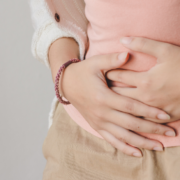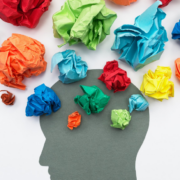Digestion From Top To Bottom
Digestion is an intricate, highly coordinated process that breaks down the food we eat into nutrients, which the body uses for energy, growth, and cell repair. Understanding this journey from ingestion to excretion can provide insights into optimizing digestive health, a cornerstone of overall well-being. It’s important to emphasize the importance of not just what we eat, but how well our bodies process and utilize food.
Let’s look through the digestive process, highlighting each step and body part involved, energy utilization, waste elimination, and the benefits of a well-functioning digestive system.
The Mouth: The Starting Point of Digestion
Digestion begins in the mouth, where mechanical and chemical processes start breaking down food. Chewing (mastication) reduces food to smaller particles, increasing the surface area for enzymes to act upon. Saliva, produced by salivary glands, contains the enzyme amylase, which begins the breakdown of carbohydrates. This mixture of food and saliva, known as a bolus, is then swallowed and propelled into the esophagus.
The Esophagus: The Conduit
The esophagus is a muscular tube that connects the throat (pharynx) to the stomach. Peristalsis, a series of wave-like muscle contractions, pushes the bolus down the esophagus. At the end of the esophagus, the lower esophageal sphincter (LES) relaxes to allow the bolus into the stomach and then closes to prevent stomach contents from refluxing back into the esophagus.
The Stomach: The Mixing Chamber
The stomach plays a crucial role in both the mechanical and chemical aspects of digestion. Gastric juices, primarily hydrochloric acid (HCl) and the enzyme pepsin break down proteins and kill potential pathogens. The stomach lining is protected from these harsh conditions by a thick layer of mucus. The churning action of the stomach further mixes food with digestive juices, turning the bolus into a semi-liquid substance called chyme. This process can take several hours, depending on the complexity of the meal.
The Small Intestine: The Absorption Powerhouse
Chyme is gradually released into the small intestine, where most nutrient absorption occurs. The small intestine consists of three parts: the duodenum, jejunum, and ileum. The duodenum receives chyme from the stomach, along with bile from the liver and gallbladder, and pancreatic enzymes. These secretions neutralize stomach acid and further digest proteins, fats, and carbohydrates.
In the jejunum and ileum, the inner surface is lined with villi and microvilli, tiny hair-like structures that significantly increase the surface area for absorption. Nutrients pass through the intestinal lining into the bloodstream, which transports them to various tissues and organs. The absorbed nutrients include amino acids from proteins, simple sugars from carbohydrates, fatty acids, and glycerol from fats, vitamins, and minerals.
The Liver and Pancreas: The Supportive Organs
The liver and pancreas play essential roles in digestion. The liver produces bile, which emulsifies fats, making them easier to digest. Bile is stored in the gallbladder and released into the duodenum as needed. The pancreas produces a cocktail of digestive enzymes and bicarbonate, which are secreted into the small intestine to aid in the digestion of proteins, carbohydrates, and fats, and to neutralize stomach acid.
The Large Intestine: The Finishing Touch
Once most nutrients are absorbed, the remaining indigestible food residue, along with some water and electrolytes, enters the large intestine (colon). The primary functions of the large intestine are to absorb water and electrolytes from the remaining indigestible food matter and to form and store feces until defecation. Beneficial bacteria in the colon ferment some of the indigestible carbohydrates, producing short-chain fatty acids that are absorbed and used by the body.
The Rectum and Anus: The Exit
The final stage of digestion is the elimination of waste. Feces, the solid waste product, is stored in the rectum until it is expelled from the body through the anus during defecation. This process is regulated by the internal and external anal sphincters .
Utilization of Energy
So, how do our bodies get energy from food? The nutrients absorbed during digestion are transported via the bloodstream to cells throughout the body, where they are used for energy, growth, and repair.
Carbohydrates are broken down into glucose, the primary energy source for cells. Proteins are digested into amino acids, which are used to build and repair tissues, enzymes, and hormones. Fats are broken down into fatty acids and glycerol, which provide a concentrated source of energy and are essential for cell membrane structure and hormone production.
Benefits of Good Digestion for Overall Health
Our bodies rely on the nutrients found in food to function at their best. That’s why optimal digestion is crucial for overall health and well-being. Here are some key benefits:
- Nutrient Absorption: Efficient digestion ensures that the body absorbs the maximum amount of nutrients from food, supporting energy levels, immune function, and overall vitality.
- Waste Elimination: Proper digestion and regular bowel movements prevent the build-up of toxins and waste products in the body, reducing the risk of conditions such as constipation and diverticulitis, and even hormone imbalances like estrogen dominance. When waste is not efficiently eliminated, excess estrogen can be reabsorbed into the bloodstream, leading to symptoms like weight gain, mood swings, and irregular menstrual cycles.
- Gut Microbiota: A healthy digestive system supports a diverse and balanced gut microbiome, which is vital for immune function, mental health, and protection against pathogens. Many immune cells are created within the gut, playing a crucial role in the body’s defense mechanisms and overall immune response.
- Inflammation Reduction: Good digestion reduces the risk of chronic inflammation, which is linked to many diseases, including heart disease, diabetes, and autoimmune conditions.
- Weight Management: Efficient digestion helps regulate appetite and metabolism. When digestion is sluggish or impaired, it can lead to a slower metabolism, resulting in weight gain or difficulty losing weight.
- Mental Health: The gut-brain axis highlights the connection between digestive health and mental well-being. Good digestion supports the production of neurotransmitters, like serotonin, that regulate mood and cognitive function.
Tips for Optimizing Digestion
To promote optimal digestion and overall health, consider the following tips:
- Eat a Balanced Diet: It goes without saying that our bodies thrive on nutrient-dense foods. Digestion is impaired by highly processed foods because they often lack essential nutrients and fiber, and contain additives and preservatives that can disrupt the balance of gut bacteria and hinder digestive efficiency. Be sure to include a variety of whole foods, rich in fiber, vitamins, and minerals. Focus on fruits, vegetables, whole grains, lean proteins, and healthy fats.
- Stay Hydrated: Drink plenty of water throughout the day to support digestive processes and prevent constipation. Although everyone’s needs are unique, 2-3L of filtered water a day is generally recommended.
- Chew Thoroughly: Take time to chew food properly, aiding mechanical digestion and allowing digestive enzymes to work more effectively. Try at least 15-20 chews before swallowing.
- Manage Stress: Chronic stress can negatively impact digestion by disrupting the balance of gut bacteria, leading to issues such as bloating, constipation, and diarrhea. It also slows down the movement of food through the digestive tract, causing discomfort and poor nutrient absorption. Additionally, stress increases the production of stomach acid, which can contribute to conditions like acid reflux and ulcers. Practice stress-reducing techniques such as deep breathing, meditation, and regular physical activity.
- Regular Exercise: Physical activity stimulates intestinal contractions, promoting regular bowel movements and reducing the risk of constipation. Daily walks, more movement around the house, and yoga are great ways to incorporate movement daily.
- Avoid Overeating: Eat moderate portions to avoid overloading the digestive system and causing discomfort or indigestion.
- Probiotics and Prebiotics: Incorporate foods rich in probiotics (like yogurt, kefir, and fermented vegetables) and prebiotics (like garlic, onions, and bananas) to support a healthy gut microbiome.
- Supplement Support: Incorporating specific supplements can significantly enhance digestive health and improve overall gut function. Work with a qualified health practitioner before including any new supplementation. Here are a few that have been shown to benefit good digestion:
-
- Probiotics: Supplementing beneficial bacteria can help maintain a healthy gut microbiome and improve digestive function.
- Digestive Enzymes: Specialized enzymes support the breakdown of food into smaller, absorbable nutrients, enhancing the absorption of carbohydrates, proteins, and fats in the digestive tract.
- Psyllium Husk Powder: A natural fiber supplement that promotes regular bowel movements and supports digestive health.
- L-Glutamine: An amino acid that helps repair and maintain the intestinal lining, supporting overall gut health.
Understanding the complex digestive process from top to bottom highlights the importance of each step in transforming the food we eat into the energy and nutrients our bodies need to thrive. By optimizing digestion through mindful eating habits, stress management, and a balanced diet, we can enhance our overall health, prevent digestive disorders, and support everyday wellness and quality of life.
If you are experiencing symptoms of poor digestion, such as bloating, diarrhea, fatigue, or other discomforts, consider consulting with a naturopathic doctor. We can provide comprehensive testing and tailored recommendations to address your unique digestive health needs and improve your overall wellness.
Sources:
- Mayo Clinic Staff. Digestion: How long does it take? Mayo Clinic, Mayo Foundation for Medical Education and Research, 2018.
- National Institute of Diabetes and Digestive and Kidney Diseases. Your Digestive System & How It Works. U.S. Department of Health and Human Services, 2021.
- WebMD. How Your Digestive System Works. WebMD, LLC, 2021.
- Johns Hopkins Medicine. The Digestive System. The Johns Hopkins University, The Johns Hopkins Hospital, and Johns Hopkins Health System, 2020.
- Cleveland Clinic. Digestive System: Function, Organs & Anatomy. Cleveland Clinic, 2021.
- American Gastroenterological Association. Understanding the Digestive System. American Gastroenterological Association, 2019.
- Merck Manual Consumer Version. Overview of the Digestive System. Merck & Co., Inc., 2020.
- Harvard Health Publishing. The importance of a healthy gut. Harvard Medical School, 2020.
- Better Health Channel. Digestion and digestive system. State Government of Victoria, Australia, 2021.
- National Center for Biotechnology Information. Digestion, absorption, and energy metabolism. NCBI, 2020.
- Stanford Children’s Health. Digestive System. Stanford Medicine Children’s Health, 2020.
- NHS Inform. How the digestive system works. NHS Scotland, 2021.








